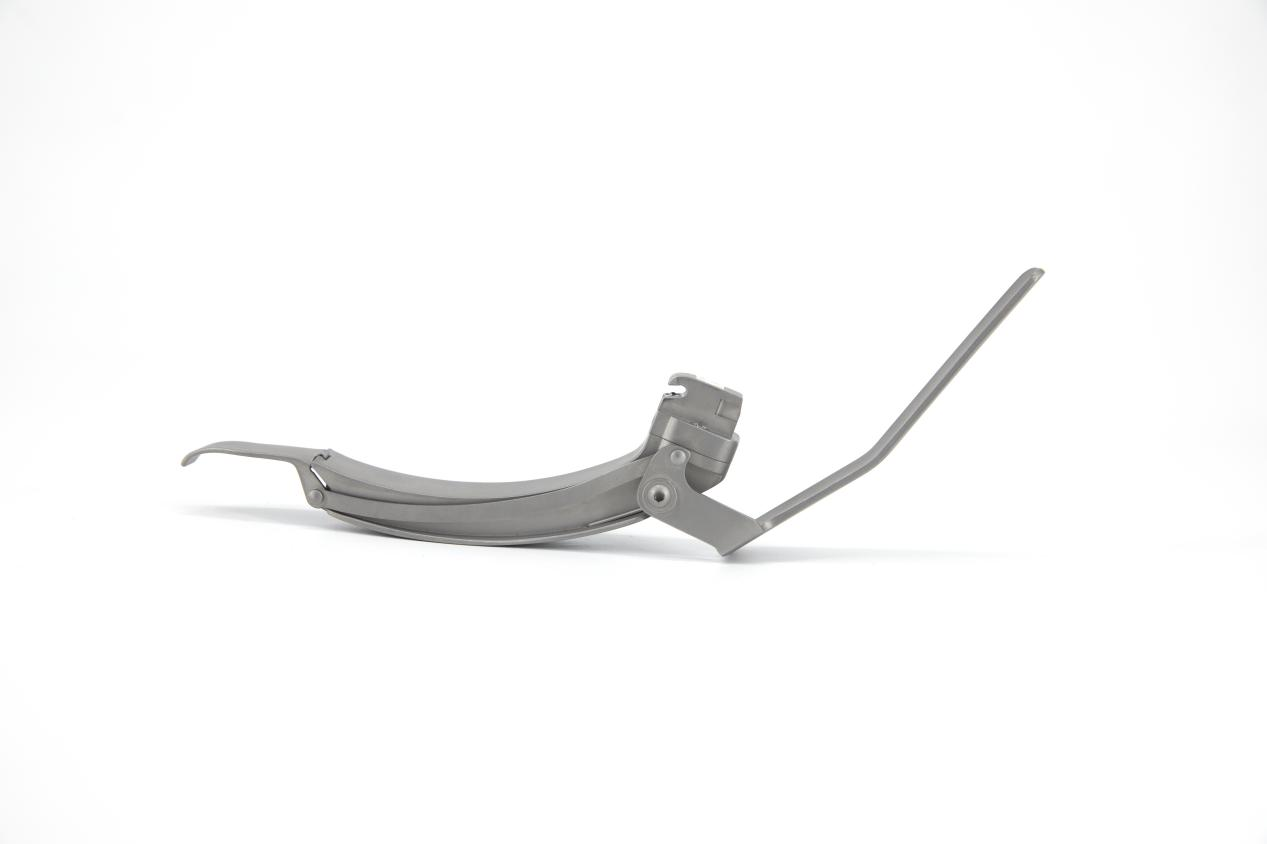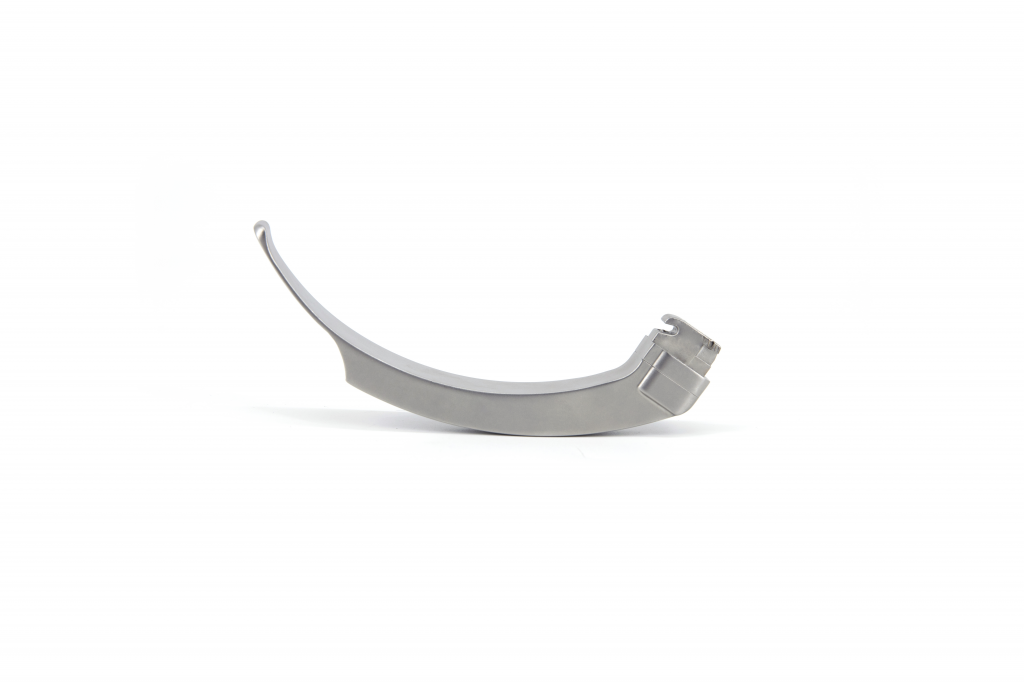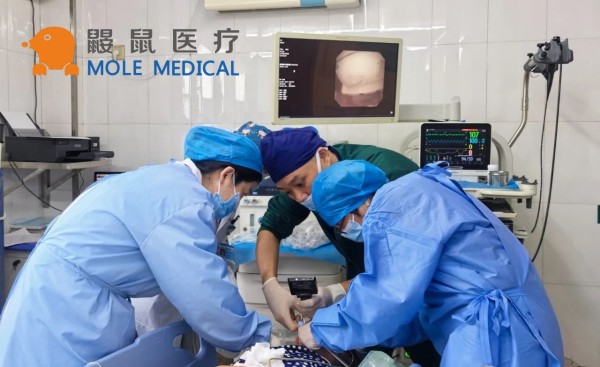Different Types of Laryngoscope Blades Unveiled
Dec 23, 2023
If you work in healthcare, you likely interact with laryngoscope blades regularly. These blades are essential tools in intubation procedures and are vital for ensuring patient safety and comfort.
However, with different types of laryngoscope blades available on the market, selecting the right blade can be a daunting task. It’s essential to choose a blade that aligns with the intended procedure, patient population, and provider preference. In this article, we’ll reveal the different types of laryngoscope blades and their unique features to help you make informed decisions.
Key Takeaways
- There are different types of laryngoscope blades available on the market.
- Selecting the right laryngoscope blade is crucial for a successful intubation procedure.
- Laryngoscope blades are essential tools in ensuring patient safety and comfort.
- The type of laryngoscope blade you choose depends on factors such as the intended procedure, patient population, and provider preference.
- Proper maintenance and care of laryngoscope blades are critical for optimal functionality and longevity.
Understanding Laryngoscope Blades and Their Importance in Intubation
Laryngoscope blades are essential tools used during the intubation process in medical procedures. The blade is mounted to a handle and used to visualize the larynx by displacing the tongue and other structures out of the way.
Intubation is a critical component of many medical procedures, including general anesthesia, mechanical ventilation, and emergency resuscitation. The selection of the appropriate type of laryngoscope blade is crucial for successful intubation.
There are various types of laryngoscope blades, including Miller blades, Macintosh blades, Wisconsin blades, D-blades, McCoy blades, and specialty laryngoscope blades. Each has unique features and advantages that make them suitable for specific medical situations.
Therefore, understanding the different types of laryngoscope blades and their uses is vital for healthcare professionals. It ensures the right blade is available during intubation processes for optimal patient care.
Miller Blades: Ideal for Straight Blade Intubation
When it comes to intubation using a straight blade, Miller blades are an ideal option for healthcare professionals. These blades have a straight, elongated shape that makes it easier to insert the endotracheal tube by lifting the epiglottis. They are commonly used in adult patients with good neck mobility.
Miller blades are available in different sizes, ranging from #0 to #6, depending on the patient’s anatomy and the size of the endotracheal tube. They come in both reusable and disposable forms, depending on the healthcare professional’s preference and the healthcare facility’s protocols.
While Miller blades are ideal for straight blade intubation, they may not be suitable for all cases and may have some limitations. In situations where visualization is limited, alternative laryngoscope blades may be recommended.
Overall, healthcare professionals should consider the patient’s anatomy, the procedure being conducted, and their personal preferences when choosing laryngoscope blades. Proper maintenance and care of these blades are critical in ensuring their optimal functionality and longevity.
Macintosh Blades: The Standard Choice for Intubation
When it comes to laryngoscope blade options, Macintosh blades are considered the standard choice for intubation procedures. These blades feature a curved design that allows for smooth insertion, improving visualization and reducing the risk of injury during intubation. While there are other laryngoscope blade options available, Macintosh blades are the most frequently used and recommended in medical practice.
When compared to other laryngoscope blades in terms of laryngoscope blade comparison, Macintosh blades offer advantages such as ease of use and consistency in results. They are also available in a variety of sizes to accommodate different patient populations.
It’s important to note that while Macintosh blades are a popular choice, healthcare professionals should carefully consider the specific needs of their practice and patients when selecting a laryngoscope blade. It may be necessary to consider alternative laryngoscope blade options when practicing on patients with unique airway anatomy or challenging intubation scenarios.
Overall, Macintosh blades remain a reliable and widely used option for healthcare professionals in need of a dependable laryngoscope blade. When used properly, these blades can greatly enhance the success and safety of intubation procedures.
Wisconsin Blades: Preferred for Difficult Airway Management
Wisconsin blades are specifically designed with features that aid in managing difficult airway cases. These blades are ideal for use in patients with challenging airway anatomy or limited mobility, as they provide better visualization and access to the airway.
One of the outstanding features of these blades is their unique shape, which is designed to improve visualization and access to the larynx. They have an angled blade with a smooth curve that fits the shape of the patient’s mouth and allows the practitioner to lift the tongue and epiglottis with minimal tissue trauma.
Furthermore, these blades come in two sizes: adult and pediatric, making them ideal for use in patients of all age groups. They are also available in both reusable and disposable forms, depending on the needs of the healthcare provider.
Wisconsin blades are an excellent choice for difficult airway management and are highly recommended by healthcare professionals worldwide.
D-Blades: An Innovative Option for Improved Visualization
If you’re looking for a laryngoscope blade with advanced visualization capabilities, D-blades may be the ideal choice for you. These blades feature a unique design that allows for better visibility during intubation procedures, making them especially useful in challenging scenarios where visualization is critical.
The cutting-edge features of D-blades include a built-in LED light source that illuminates the area of interest, enhancing visibility and making it easier to see what you’re doing. Additionally, the blade’s unique shape and curvature further optimizes visualization and may be particularly useful for managing difficult airways.
It’s important to note that D-blades are pricier than other laryngoscope blade options, and not all healthcare facilities may have the budget to invest in them. However, if you’re committed to providing the best patient care and need advanced visualization capabilities, D-blades are certainly worth considering.
McCoy Blades: Complementing Difficult Intubation Situations

McCoy blades are the ideal laryngoscope blade option for healthcare providers facing difficult intubation situations and limited neck mobility. These blades are specifically designed with a unique hinged mechanism that provides increased visualization and flexibility during intubation procedures.
McCoy blades are typically more expensive than other laryngoscope blade options, but their advanced features make them a worthy investment for healthcare providers seeking to improve patient care and outcomes.
When evaluating laryngoscope blade options, it is important to consider factors such as patient needs and healthcare provider preferences. McCoy blades offer superior visualization and flexibility, but may not be the best fit for every patient or procedure.
Ultimately, the best laryngoscope blade option depends on individual patient and healthcare provider needs. By understanding the unique features and benefits of each blade type, healthcare providers can make informed decisions to ensure successful intubation and optimal patient care.
Disposable vs. Reusable Laryngoscope Blades: Pros and Cons
When it comes to selecting laryngoscope blades, healthcare professionals have the option of choosing between disposable and reusable options. Both types come with their own set of advantages and disadvantages that are important to consider before making a decision.
Disposable Laryngoscope Blades
Disposable laryngoscope blades are designed for single-use and are disposed of after each intubation procedure. The advantages of using disposable blades include reduced risk of cross-contamination and infections, simplicity of use, and no need for cleaning and maintenance. However, the cost of purchasing disposable blades can be higher in the long run, and they may not be as environmentally friendly as their reusable counterparts.
Reusable Laryngoscope Blades
Reusable laryngoscope blades are designed to be used multiple times after thorough cleaning between procedures. Some of the benefits of using reusable blades include lower long-term costs, reduced waste, and a wider range of blade designs and sizes. However, reusable blades require proper cleaning and maintenance, which can be time-consuming and may require specialized equipment and training. There is also a risk of transmission of infections if proper cleaning protocols are not followed.
Ultimately, the decision between disposable and reusable laryngoscope blades comes down to weighing the advantages and disadvantages and determining which option is best suited for the specific healthcare practice and the patients it serves. Factors to consider may include infection prevention policies, cost-effectiveness, environmental impact, and healthcare provider preference.
Specialty Laryngoscope Blades: Beyond the Basics
While standard laryngoscope blades are suitable for most intubation procedures, there are situations where specialized blades may be necessary. For example, in cases where patients have limited neck mobility, a McCoy blade may provide the necessary assistance, and Wisconsin blades can be beneficial in managing difficult airways.
Other specialty laryngoscope blades include flexible blades that can adapt to varying anatomies, as well as blades with built-in suction capabilities to clear secretions during intubation. These blades may also have unique specifications, such as a smaller blade size for pediatric patients or a wider range of blade angles for enhanced visualization.
When selecting specialty laryngoscope blades, it’s essential to consider the specific needs of the patient population and the procedure being performed. You must also ensure that the necessary equipment is available for the safe use of such blades. Hence, healthcare providers should make informed decisions and select the appropriate equipment to achieve successful outcomes.
Choosing the Best Laryngoscope Blade for Your Practice
When selecting the best laryngoscope blade for your practice, it’s important to consider several factors, including the type of procedure, patient population, and personal preferences as a healthcare provider. There is no “one-size-fits-all” blade, so it’s essential to weigh the pros and cons of each option.
Take note of the unique features of each blade, such as shape, size, and illumination, when making your decision. The best laryngoscope blade should provide optimal visibility and access during the intubation process.
Consider the durability and cost-effectiveness of the blade as well. While reusable blades may have a higher upfront cost, they can be more cost-effective in the long run when properly maintained. Disposable blades may be more convenient, but frequent replacement can add up over time.
Ultimately, the best laryngoscope blade for your practice will vary depending on your specific needs. Don’t hesitate to consult with colleagues or industry experts to ensure you make an informed decision.
Maintaining and Caring for Laryngoscope Blades
Proper maintenance and care of laryngoscope blades are crucial to ensure their optimal functionality and longevity. Here are some recommendations:
Cleaning
After each use, clean the blade with a soft-bristled brush and mild, pH-neutral detergent. Avoid harsh chemicals or abrasive scrubbers that can damage the blade’s surface. Rinse thoroughly with clean water and dry with a lint-free cloth or air-dry completely. Sterilize the blade following the manufacturer’s specifications before reuse.
Storage
Store laryngoscope blades in a dry, cool, and clean area to prevent corrosion or contamination. Avoid exposing the blades to extreme temperatures, moisture, or direct sunlight. Use protective covers to shield the blades from dust, scratches, and other physical damage.
Inspection
Regularly inspect laryngoscope blades for any signs of wear, damage, or malfunction. Check the blade’s light source, lens, and handle for cracks, discoloration, or loose connections. Replace or repair any defective parts immediately to prevent potential harm to the patient or healthcare provider.
By following these simple maintenance and care guidelines, healthcare professionals can ensure their laryngoscope blades remain in optimal condition and ready to perform successful intubation procedures when required.
Conclusion
Choosing the right laryngoscope blade for any medical procedure is crucial for ensuring successful intubation and optimal patient care. From the standard Macintosh blades to the specialized D-blades and McCoy blades, healthcare professionals have access to a wide range of options to suit their unique needs. It is essential to consider the patient population, procedure, and healthcare provider preferences when selecting the best laryngoscope blade.
Proper maintenance and care of laryngoscope blades are equally important to ensure their longevity and optimal functionality. Remember to follow the manufacturer’s guidelines and schedule routine maintenance to keep your equipment in top shape.
In conclusion, understanding the different types of laryngoscope blades available, their features, and proper maintenance is essential for healthcare professionals. By making informed decisions and selecting the appropriate laryngoscope blade, medical professionals can ensure successful intubation and provide optimal patient care.
Categories
Latest Articles

Disposable Nephroscopes: Redefining Safety & Efficiency in Urology
Introduction The shift towards minimally invasive urological surgery has found a pivotal ally: the disposable nephroscope. As traditional reusable scopes grapple with persistent biofilm contamination risks and soaring sterilization costs, the global medical community is rapidly adopting single-use solutions. This article analyzes the clinical value, technological evolution, and dynamic innovation landscape driving this transformative shift. ... Read more

Disposable Video Laryngoscope Blades: The Ultimate Solution for Preventing Cross-Contamination
In the operating room, as the cold light of a video laryngoscope illuminates a patient’s airway, an age-old medical challenge is being redefined: How can life-saving instruments avoid becoming vectors of infection? Jiangsu MoleMedical drives an innovative safety revolution—replacing reusable devices with single-use, sterile laryngoscope blades that create a pure barrier for critical airways. Traditional video ... Read more
-2.jpg)
FDA & CE Approved Video Laryngoscope: What Makes It Stand Out?
Introduction In high-pressure emergencies and precision-driven operating rooms, video laryngoscopy is revolutionizing airway management. Mole Medical’s FDA and CE-certified technology replaces tactile-dependent “blind intubation” with real-time visual navigation – enhancing safety, accuracy, and clinical outcomes worldwide. Why Certification Matters Mole Medical’s dual certifications validate its global compliance and performance: FDA Clearance: Rigorous validation of safety/efficacy ... Read more

Mole Medical Showcases Advanced Endoscopy Solutions at CMEF Autumn 2025, Driving Global Partnerships
Guangzhou, China – September 26-29, 2025 – The 92nd China International Medical Equipment Fair (CMEF Autumn) concluded successfully on September 29th at the Canton Fair Complex in Guangzhou. Mole Medical Technology Co., Ltd. (Mole Medical) made a significant impact at the event, drawing global medical professionals and partners to its booth (Hall 2.1, Stand Q24) ... Read more

How to Use Disposable Ureteroscopes Safely and Efficiently
In the field of urology, the application of disposable electronic ureteral-kidney pelvis endoscopy catheters is leading the technological innovation in minimally invasive surgeries. According to the 2024 multi-center research data from China’s urology department, among the over 5,000 surgeries included, the patient group using disposable catheters performed significantly better in key indicators such as operation ... Read more



